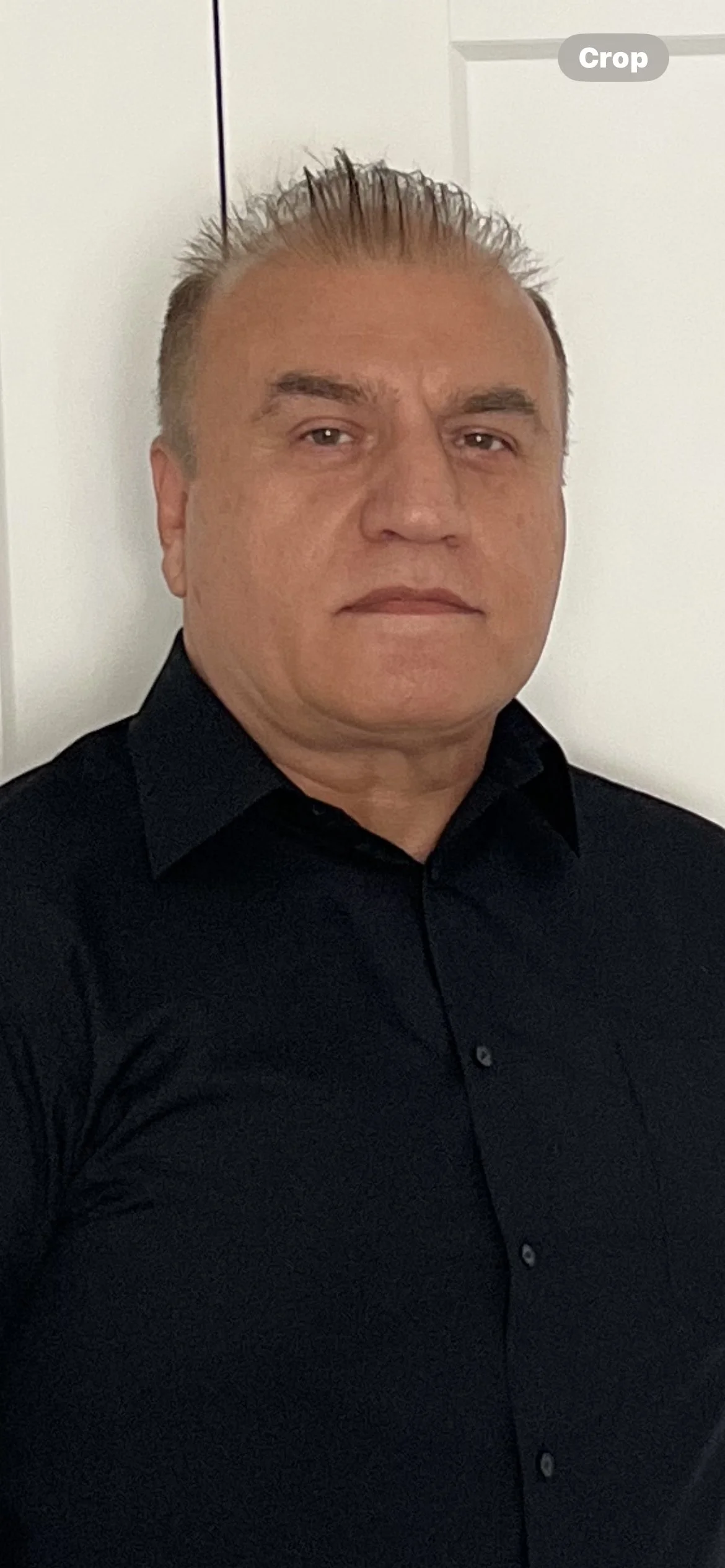#14: Time to Boost Your Vitamin D?
Subscribe below to become a health insider!
In This Issue:
Quick Takes: Vitamin D benefits that go way beyond bone health
Community Buzz: Tasty forms of Vitamin D, improving strength with your thoughts, and a 10-step jumping progression to build power and bone strength
Member Spotlight: At 63, Farooq Ganai is prioritizing his health and committing to improved sleep and fitness
New Releases: Dr. Kaitlin shares her story on Benchmark Member Mary Fearon’s new podcast
Co. Updates: Introducing the Benchmark Dashboard to track your trends over time! 📈 Plus, welcome Veer to our team!
QUICK TAKES
Takeaways from content we’ve enjoyed & other timely topics
Shorter Days, Bigger Need: Time to Boost Your Vitamin D? ☀️
xAs the Fall days get shorter, our exposure to sunlight decreases, and it becomes harder for our bodies to produce enough vitamin D, nature’s “sunshine vitamin.” While most people know vitamin D supports bone health, its benefits are far-reaching. Once absorbed, vitamin D acts as a steroid hormone – it enters the cells and directly influences nearly 1,000 genes, or about 5% of our genome. It not only bolsters bone strength, but also immune defense, brain health, and even mood through serotonin synthesis. Low vitamin D has been linked to fractures, infections, cognitive decline, and higher overall mortality.
When Vitamin D Supplementation Becomes Important
Our skin produces vitamin D when exposed to UVB light, but several factors limit our ability to produce enough of it. These include darker skin pigmentation, limited time outdoors or use of sunscreen, genetics, obesity, and age. At age 70, for example, you produce about 20% of what you did at age 20. In northern latitudes as in Canada, UVB radiation is not high enough for four to five months of the year for us to produce enough vitamin D, making supplementation essential for most people.
Optimal Levels and Supplementation
Optimal blood levels are thought to be around 75 to 150 nmol/L; below 25 nmol/L is considered deficient, and above 250 nmol/L is toxic. Staying in the optimal range is linked to lower risk of fractures, respiratory illness, and even all-cause mortality. Health Canada recommends 400 IU daily for most adults, with an upper non-prescription limit of 2,500 IU per day. Research suggests many adults need relatively high doses to reach optimal levels. For example, a daily routine of 1,000 IU Vitamin D3 may raise blood levels by about 10-15 nmol/L. Testing your Vitamin D is the most reliable way to tailor your supplementation. Pairing Vitamin D3 with K2 helps ensure calcium is directed to bones rather than arteries. Foods rich in Vitamin D3 are fairly limited, but include fatty fish, cod liver oil, and egg yolks. Some foods are fortified with Vitamin D, but these typically contain Vitamin D2, which is less potent than D3.
What Vitamin D Can Do for You
Vitamin D helps your body absorb calcium and direct it to your bones, lowering the risk of osteoporosis-related fractures. It also supports muscle strength, which can help prevent falls. Supplementation has also been shown to reduce the risk of respiratory infections. Studies suggest vitamin D may modestly lower the risk of death, particularly in older adults or those who are deficient. Observational research links low vitamin D to dementia risk, and vitamin D plays a role in regulating serotonin, the brain chemical that influences mood and wellbeing.
Testing Matters
In Ontario, OHIP covers vitamin D testing only for specific conditions including osteoporosis and kidney disease, but demand for testing among clinicians and health-conscious consumers remains high. Vitamin D needs are highly individualized, shaped by skin tone, latitude, body composition, and lifestyle. Testing offers a cost-effective way to tailor supplementation, and may help prevent deficiency as well as over-correction.
Bottom Line
Vitamin D is not just a vitamin, it is a hormone that regulates thousands of genes, strengthens bones, fine-tunes the immune system, and may even influence brain health. Because production is inconsistent and food sources are limited, supplementation with D3, ideally paired with K2, is often necessary. Aim for optimal, not minimal levels, guided by individualized testing where possible.
📚 To dive deeper into this topic, check out Rhonda Patrick’s resources on Found My Fitness, delving into vitamin D research and implications. Specifically, check out episodes on vitamin D supplementation, vitamin D’s role in longevity, and a talk with Dr. Bruce Ames on the importance of maintaining optimal vitamin D levels.
COMMUNITY BUZZ
Highlights from Benchmark’s community
Daily Dose of D 😋
If you find it tough to take daily vitamin D supplements because you’re not a fan of soft-gel capsules, there are plenty of options making your daily-D easier to swallow. For example, we stumbled upon Nutra Meltz supplements which offer vitamin D3 in a berry-flavoured quick-dissolving tablet. You can also find combination products that contain vitamin D. Emily told us about Muscle 5, a flavoured powder blend with 1000 IU of vitamin D along with 40g of protein, 3g of creatine, and 450 mg of calcium in a single serving.
Jump Time ⛹️
The simple act of jumping can do wonders for bone strength. Jumps and other quick, high-impact movements signal the bone to lay down more minerals, which increases the density and strength of the bone. Tara shared this video from Dr. Jocelyn Wittstein, explaining that a force of impact equal to about 3 times your body weight can stimulate bone formation. Jumping also helps develop agility and power, which we don’t often train with normal daily activities. The key is finding the right starting point for you and to progress slowly and progressing gradually. Try this 10-step plyometric progression from Benchmark team member and strength & conditioning coach, John Moate.
Imagine Yourself Stronger 🙇
Scott pointed us to a fascinating study showing that simply mentally imagining muscle contractions increased strength by 35%. We are big believers in the power of the mind to improve our health, and this highlights the value of visualization in preparing the body for physical tasks. Rather than driving an actual increase in muscle mass, the researchers attributed the gains primarily to the brain's improved ability to recruit and mobilize the muscles to perform the visualized movement.
MEMBER SPOTLIGHT
Featured members and their health journeys
Farooq Ganai, Benchmark Member
Farooq Ganai
When Farooq turned 60, he felt that he’d taken his health for granted. He says “at a certain point you’ll find that the time is up, you need to make a change now.” He came to Benchmark to define a roadmap for improvement, and he is now executing his plan and reaping the rewards! Read his story of commitment.
NEW RELEASES
Our latest featured content
And That Changed Everything
Dr. Kaitlin Link on “And That Changed Everything” podcast.
Benchmarker and marketing guru Mary Fearon just launched a podcast in which she interviews leaders and uncovers the stories around pivotal moments in their lives. Dr. Kaitlin joined her to discuss her early influences, her career shift from the ER to Benchmark, and what brings her joy at work every day. Check it out.
COMPANY UPDATES
The latest updates from Benchmark HQ
The Benchmark Dashboard! 🎉
The Benchmark Dashboard for data, insights, and information, helping you track trends over time.
Introducing the Benchmark Dashboard, a secure interactive site where you'll find your Benchmark results, insights, and guidance, with educational info. and downloadable reports. Track your results over time, to help you spot trends and monitor your progress.📈 Upcoming assessments come with access to the beta.
Welcome, Veer Khurana 🙌
Veer Khurana, Benchmark’s Lead Software Engineer
We're thrilled to officially welcome Veer to the Benchmark Team, who joined us this summer as Lead Software Engineer, and spearheaded the development of the Benchmark Dashboard. He brings with him deep expertise, creativity, and a love of cars. Here's to the road ahead!




